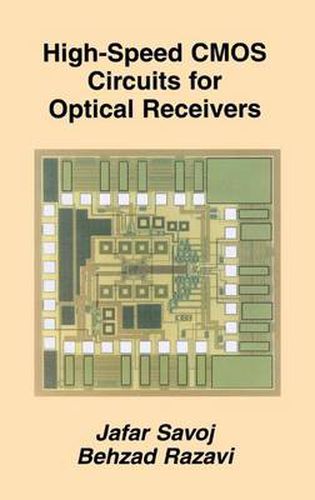Readings Newsletter
Become a Readings Member to make your shopping experience even easier.
Sign in or sign up for free!
You’re not far away from qualifying for FREE standard shipping within Australia
You’ve qualified for FREE standard shipping within Australia
The cart is loading…






This title is printed to order. This book may have been self-published. If so, we cannot guarantee the quality of the content. In the main most books will have gone through the editing process however some may not. We therefore suggest that you be aware of this before ordering this book. If in doubt check either the author or publisher’s details as we are unable to accept any returns unless they are faulty. Please contact us if you have any questions.
With the exponential growth of the number of Internet nodes, the volume of the data transported on the backbone has increased with the same trend. The load of the global Internet backbone will soon increase to tens of terabits per second. This indicates that the backbone bandwidth requirements will increase by a factor of 50 to 100 every seven years. Transportation of such high volumes of data requires suitable media with low loss and high bandwidth. Among the available transmission media, optical fibers achieve the best performance in terms of loss and bandwidth. High-speed data can be transported over hundreds of kilometers of single-mode fiber without significant loss in signal integrity. These fibers progressively benefit from reduction of cost and improvement of perf- mance. Meanwhile, the electronic interfaces used in an optical network are not capable of exploiting the ultimate bandwidth of the fiber, limiting the throughput of the network. Different solutions at both the system and the circuit levels have been proposed to increase the data rate of the backbone. System-level solutions are based on the utilization of wave-division multiplexing (WDM), using different colors of light to transmit s- eral sequences simultaneously. In parallel with that, a great deal of effort has been put into increasing the operating rate of the electronic transceivers using highly-developed fabrication processes and novel c- cuit techniques.
$9.00 standard shipping within Australia
FREE standard shipping within Australia for orders over $100.00
Express & International shipping calculated at checkout
This title is printed to order. This book may have been self-published. If so, we cannot guarantee the quality of the content. In the main most books will have gone through the editing process however some may not. We therefore suggest that you be aware of this before ordering this book. If in doubt check either the author or publisher’s details as we are unable to accept any returns unless they are faulty. Please contact us if you have any questions.
With the exponential growth of the number of Internet nodes, the volume of the data transported on the backbone has increased with the same trend. The load of the global Internet backbone will soon increase to tens of terabits per second. This indicates that the backbone bandwidth requirements will increase by a factor of 50 to 100 every seven years. Transportation of such high volumes of data requires suitable media with low loss and high bandwidth. Among the available transmission media, optical fibers achieve the best performance in terms of loss and bandwidth. High-speed data can be transported over hundreds of kilometers of single-mode fiber without significant loss in signal integrity. These fibers progressively benefit from reduction of cost and improvement of perf- mance. Meanwhile, the electronic interfaces used in an optical network are not capable of exploiting the ultimate bandwidth of the fiber, limiting the throughput of the network. Different solutions at both the system and the circuit levels have been proposed to increase the data rate of the backbone. System-level solutions are based on the utilization of wave-division multiplexing (WDM), using different colors of light to transmit s- eral sequences simultaneously. In parallel with that, a great deal of effort has been put into increasing the operating rate of the electronic transceivers using highly-developed fabrication processes and novel c- cuit techniques.